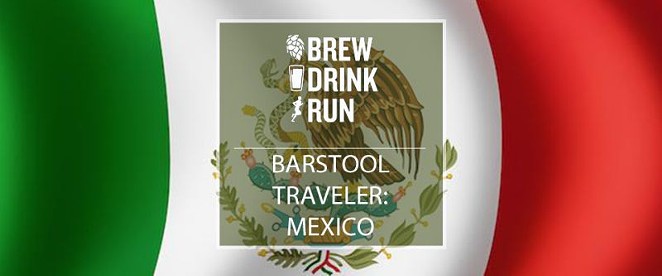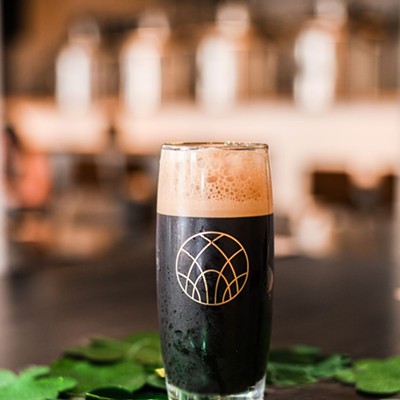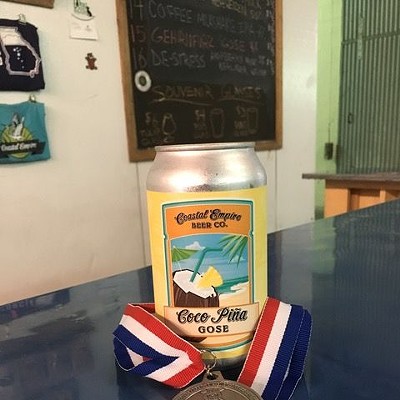CINCO DE MAYO is just around the corner, which means of millions of dollars worth of light lagers imported from Mexico will be sold in the coming days.
In 2016 over $4.4 billion worth, or around 3.18 billion bottles, of Mexican beer crossed the border to be consumed by American drinkers. These numbers make Mexico the largest exporter of beer in the world, most of it going to U.S. consumers.
But, you might ask yourself why Americans love Mexican beer so much, and how did Mexico, the home of tequila, come to be known for Corona Light?
The answers to those questions are, as you might imagine, complicated and are the result of several hundred years of beer history.
The history of brewing in Mexico goes back to at least 1000 CE. This date was determined from a mural found on the Great Pyramid in Cholula, about 70 miles from Mexico City. This mural depicts several “pulque drinkers” having a good time.
Pulque is a fermented drink derived from the sap (aguamiel in Spanish), of agave plants. Pulque isn’t truly a beer though, and is ultimately more related to the development of tequila than beer.
True beer production in Mexico is more closely derived from the production of a broad range of fermented corn products. Tesgüino is the name given to the most sacred of these fermented corn beers and is a light amber colored drink that is often whisked before being consumed.
The production of tesgüino may be connected to an even older drink called chicha. Chicha is a broad term used to describe a variety of beers that were served in different forms throughout Mezoamerica.
Chicha is truly a beer. The grain may be corn but that corn is malted, brewed and fermented as any beer today would be.
There is one big difference: The malting of the grains is usually done through the chewing of the grain — enzymes in saliva do all the work to create the sugars needed for brewing.
In fact the chewing of these grains is a community-wide industry. Community members will chew the grains, collecting them for the brewer.
Dogfish Head has produced a few varietals of Chicha as part of their ancient ales line of beers, using employees to do all the chewing, though it’s always in very small batches.
Chicha residue has been found in the mummified tartar remains on human teeth at several Mexican archeological sites but these examples have all been from 700 CE or later, meaning that chicha probably came to Mexico at a later date.
Tesgüino and chichi are still brewed by locals today but those corn beers are not what we know as Mexican beer.
The beer we know, meaning malted wheat with hops added, wasn’t introduced until the Spanish arrived. It is thought the first known European style beer was brewed by Hernán Cortés’s soldiers on their conquest of Mexico. This brewing was done in small, irregular batches due to the rarity of supplies.
The first production brewery in Mexico, and all of North America for that matter, was built under permit from the Spanish government in 1544 by Alfonso de Herrera. The exact location of Herrera’s brewery is lost to time, but was somewhere in Mexico City.
Unfortunately, government oversight, expensive ingredients, and taxation (some things never change) led to the downfall of Herrera’s brewery. Herrera did get the ball rolling though, and soon more breweries began to pop up.
One of the major factors in the slow progress of Mexican beer production was the fact that the Spanish government heavily taxed local brewing. The intent was to keep the beer imported from Spain the beer of choice. This all changed after the end of colonialization and the creation of the First Republic of Mexico in 1823.
It was another change in government that led to the light, yellow beer we now think of as Mexican beer. When the Mexican Empire was created, with the help of Napoleon III in 1863, Austrian Archduke Ferdinand Maximilian was named Emperor Maximilian I of Mexico.
While his reign lasted only three years, Maximilian had a huge, and long lasting, influence on Mexican beer. It was during his time that a number of Austrians moved to Mexico, some bringing Austrian brewing techniques and recipes with them.
One recipe that became very popular was the Vienna Lager. Maximilian had his own brewer who preferred darker style Vienna lagers which are directly related to today’s Negra Modelo and Dos XX Ambar.
With the rise of the rail system connecting the U.S. and Mexico, ingredients and equipment became more accessible in Mexico. The U.S. further helped the Mexican beer industry by passing prohibition in 1920, as Americans were eager to cross the border for drinks.
The huge growth in beer production inevitably led to consolidation. The 36 larger breweries that existed in 1920 were slowly consolidated into two. Those two companies, Modelo (Corona, Modelo, Pacifico) and FEMSA (Tecate, Sol, Dos Equis) are now responsible for almost 99% of Mexican beer production.
While the Mexican craft beer industry is many years behind the U.S. there is recent, rapid growth in the craft beer market. Unfortunately, not many of those beers are available here in Georgia. One of the few, Cerveceria Mexicana, was recently purchased by Modelo. But they will come.
If you need something to drink on Cinco de Mayo, reach for a craft beer option even if it’s not from Mexico. There are several interesting takes on the stereotypical Mexican lager including: Alesmith’s Sublime, Good People’s Mu Cha Cho, 21st Amendment’s El Sully, Oscar Blue’s Beerito or Georgia’s own Sweet Water Brewing Company’s simply named Mexican Lager.

























